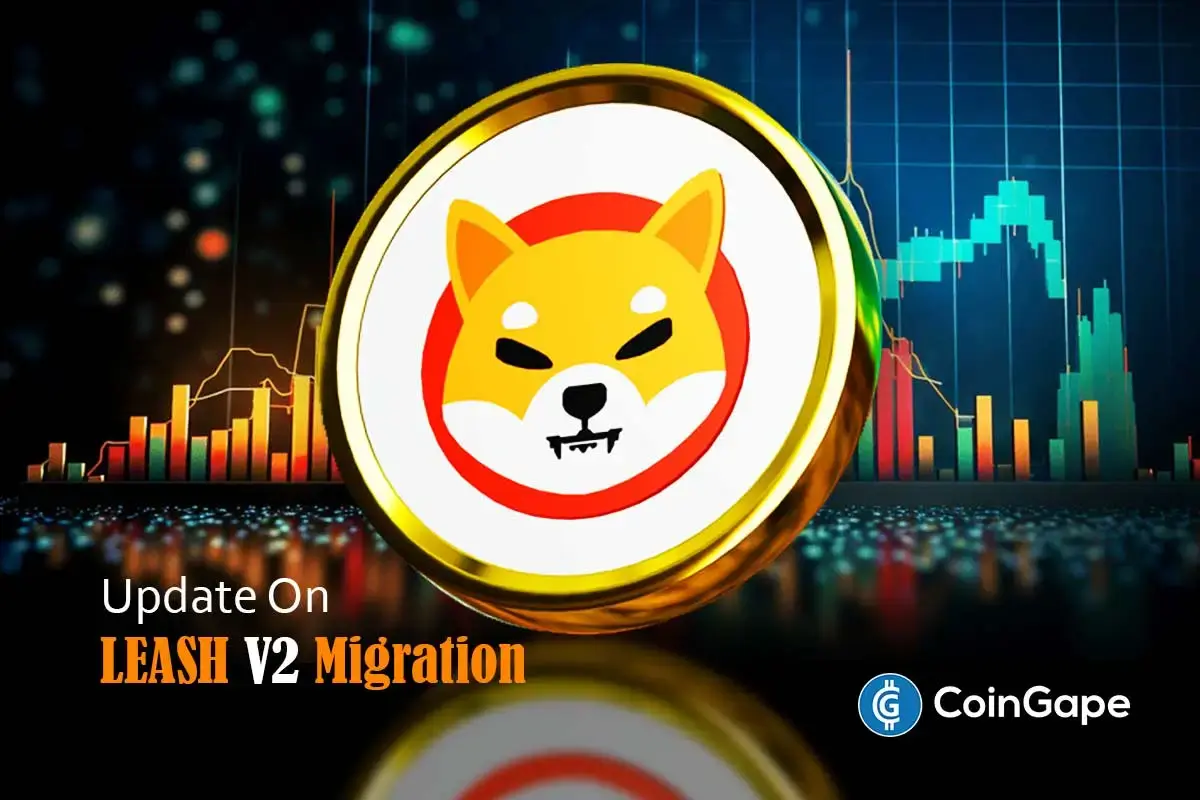Shiba Inu Releases Update On LEASH V2 Migration, Here Is What To Know

Highlights
- Shiba Inu has outlined its LEASH V2 migration roadmap, ensuring a safe, audited, and fair process for holders and liquidity providers.
- Migration will use a fixed ratio model with tokens already stored in a multisig wallet, preventing new supply creation and allowing leftover tokens to be burned.
- Migration will be rolled out in three phases, covering self-custody holders, liquidity providers, and cross-chain users.
Shiba Inu has provided an update on the migration of its LEASH token. The report explains a safe and reviewed process that aims to protect holders and liquidity providers.
Shiba Inu Unveils LEASH V2 Migration Roadmap
In a recent blog post, the Shiba Inu revealed further details concerning the migration of its LEASH V2 token. According to developer Kaal Dhairya, the migration will follow a fixed ratio model. This would ensure that holders of LEASH V1 easily move into LEASH V2 without supply dilution.
The migration will happen with a supply of tokens that has already been created and is stored in a multisig wallet. This means the contract responsible for the migration cannot create new tokens. Any tokens left after the migration can be burned to lower the total supply.
To improve security, Shiba Inu hired the blockchain cybersecurity company Hexens to review the V2 contract and migration process. The independent review is complete, and the audit report will be shared simultaneously with the mainnet launch.
The LEASH V2 contract is also designed as a minimal ERC-20 token with added features like ERC20Permit and ERC20Burnable. This approach simplifies auditing and maintenance.
Dhairya emphasized that the priority was to protect long-term holders. This would be done while ensuring liquidity providers are correctly accounted for through targeted snapshots. The strategy ensures fairness, particularly for those engaged in staking and liquidity pools.
Shiba Inu’s developers had also announced cross-chain plans. Dhairya noted that expansion to networks like Base and Solana is on the horizon while reaffirming that SHIB will remain Ethereum-native. The project is also turning to Chainlink’s CCIP framework to improve interoperability.
Phased Rollout of LEASH V2
The upgrade will be carried out in three phases. The first phase will prioritize direct migration for self-custody holders. Participants will take part in staking programs like xLEASH, veLEASH, and Metaverse Lock. This stage will also include liquidity providers on Uniswap V2 and ShibaSwap V1.
In the second phase, Shiba Inu will focus on liquidity providers using Uniswap V3 and ShibaSwap V2. This process will use historical liquidity data and proof of withdrawal methods.
The final phase will address cross-chain users. Here, the migration flow will be both L1 and L2 aware. This would ensure that native tokens on the network are exchanged at a precise one-to-one ratio.
The migration follows important changes in the ecosystem. Shibarium, the project’s Ethereum Layer 2 scaling solution, has seen an increase in transaction volumes. SHIB developers also revealed an upgrade for Shibarium. This update introduces new tools to assist users in setting up validator nodes and building on the network.
As the rollout begins in phases over the coming days, holders and stakers are being urged to stay patient and rely only on official communication channels for guidance.
Recent Posts
- Crypto News
BlackRock Bitcoin ETF Ranks Among Top ETFs In 2025 Despite Crypto Downturn
The BlackRock Bitcoin ETF (IBIT) has emerged as one of the top exchange-traded funds (ETF)…
- Crypto News
Stablecoin Adoption Deepens as Klarna Turns to Coinbase for Institutional Liquidity
Klarna has taken a major step into crypto finance by partnering with Coinbase to accept…
- Crypto News
Ripple, Circle Could Gain Fed Access as Board Seeks Feedback on ‘Skinny Master Account’
The U.S. Federal Reserve has requested public feedback on the payment accounts, also known as…
- Crypto News
Fed’s Williams Says No Urgency to Cut Rates Further as Crypto Traders Bet Against January Cut
New York Federal Reserve President John Williams has signaled his support for holding rates steady…
- Crypto News
Trump to Interview BlackRock’s Rick Rieder as Fed Chair Shortlist Narrows to Four
The Fed chair race is heating up with U.S. President Donald Trump set to interview…
- Crypto News
Breaking: VanEck Discloses Fees and Staking Details for its Avalanche ETF
The leading crypto asset manager VanEck amends its Avalanche ETF with the U.S. Securities and…